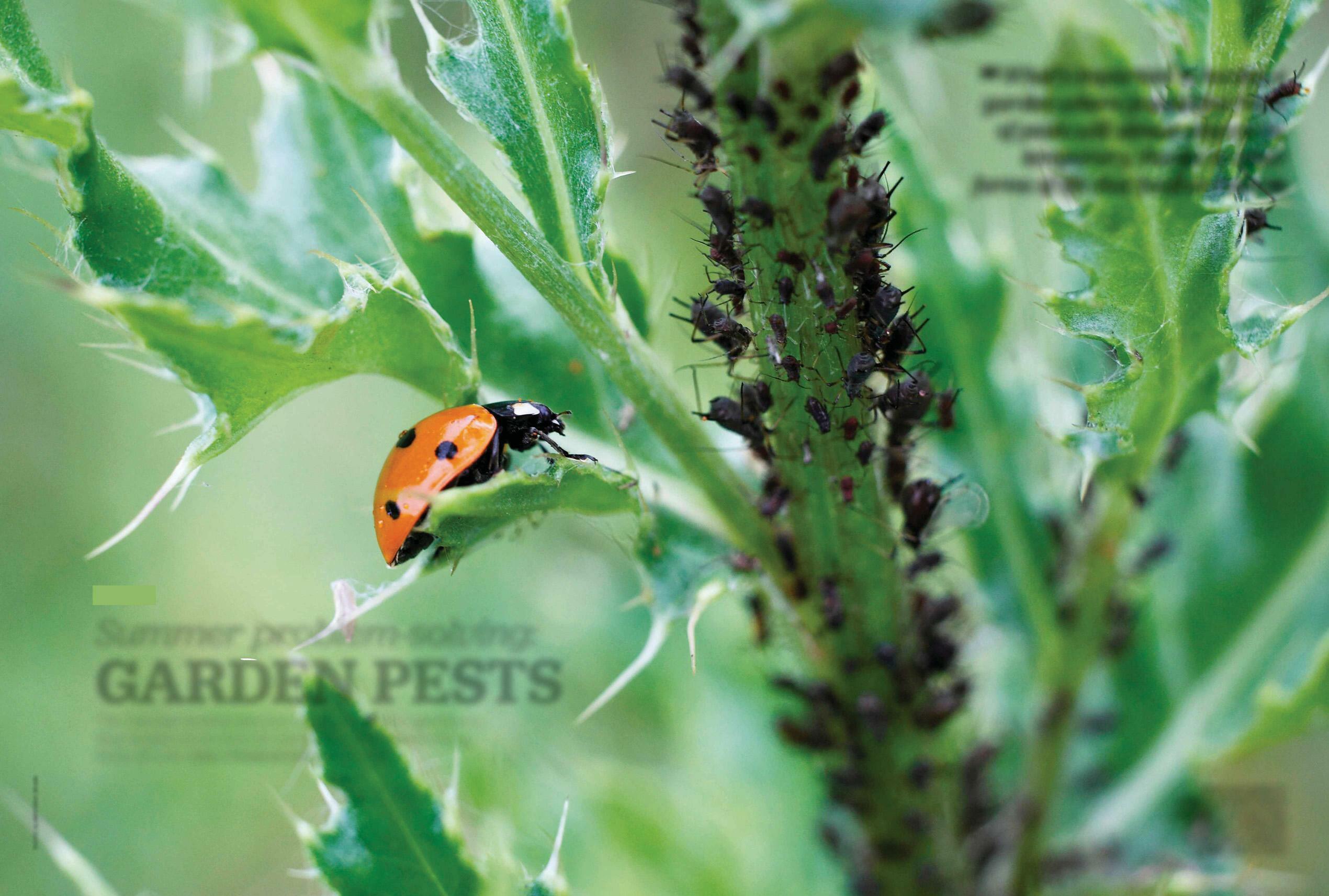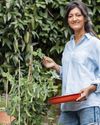
AIthough it's easy to get hung up on plant pest problems, let's be honest, it is hard to reconcile an organic and wildlife-friendly approach to your garden when pests are doing their level best to disfigure your plants.
Last month I looked at ways to minimise the effects of plant diseases; this month I'm dealing with plant pests: not the birds and mammals but the invertebrates - the insects, slugs and snails that can be among the most dispiriting of garden visitors.
But let's get real. You are never going to banish them completely, and in a garden run on organic lines they are, like it or not, part of the food chain. Even wasps - which everybody seems to detest, mainly on account of their sting- contribute to pest control as they feed on small insects such as aphids, as well as sugars in the form of nectar and honeydew.
Learning to develop a more relaxed approach will not only help lower your blood pressure but, once the food chain has settled into a natural cycle, you will notice fewer epidemics since the natural predators of certain plant eating or sap-sucking insects will have been allowed to build up in numbers rather than being discouraged by the use of non-selective insecticides and chemicals.
Even products that only target greenfly and blackfly are by their very nature removing a part of the food chain that supports valuable predators, so even they interfere with the natural order of things. What's important is that you have a garden where occasional rises in the population of certain pests will almost always be temporary, thanks to the intervention of other forms of life that feed on the things we consider the baddies' - the plant pests.
What are plant pests?
This story is from the August 2023 edition of BBC Gardeners World.
Start your 7-day Magzter GOLD free trial to access thousands of curated premium stories, and 9,000+ magazines and newspapers.
Already a subscriber ? Sign In
This story is from the August 2023 edition of BBC Gardeners World.
Start your 7-day Magzter GOLD free trial to access thousands of curated premium stories, and 9,000+ magazines and newspapers.
Already a subscriber? Sign In

A new plot for tasty crops
Taking on a new allotment needn't be hard work. By simply following a few easy tips you can have bumper crops in no time, just like Alessandro Vitale

We love July
July is an island floating between the joy of June and the slightly fatigued month of August. It's a grown-up month: the year has shrugged off its adolescent exuberances, the weather is (hopefully) warm enough for ice cream to be one of your five a day, the sea should be swimmable without (too much) danger of hypothermia and thoughts will be of holiday shenanigans and family barbecues. School's out this month, the next tranche of glorious summer colour is washing across our borders and it's my birthday. Lots of reasons to give three rousing cheers for July!

YOUR PRUNING MONTH
Now, at the height of summer, Frances Tophill shows how to boost your plants' health and productivity with a timely cut

Hassle-free harvests
Flowers are out in abundance this month and for Jack Wallington, many of these blooms make delicious, low-effort pickings

Bite-sized bounties
Glorious doorstep harvests can easily turn into gluts, so let Rukmini Iyer's recipes help you savour every last bit

Upcycled outdoor living
Create unique and stylish garden features for minimal cost using reclaimed materials and simple DIY skills. Helen Riches shares four step-by-step projects and more inspiring eco tips

Secrets of a COLOURFUL GARDEN
Buildings and landscapes can play a vital role in supercharging your space, as Nick Bailey demonstrates

Greening up a city balcony
Looking for sustainable, small-space gardening ideas? Take inspiration from Oliver Hymans' transformed balcony garden in north-east London - now a lush, green haven for humans and wildlife

The dry and mighty garden
As we adapt our gardens to a more volatile climate, Alan Titchmarsh reveals how to create a drought-tolerant plot and picks his top plant performers

Nature knows best
Carol Klein explains how to choose plants for specific growing conditions, based on what has naturally adapted to thrive there